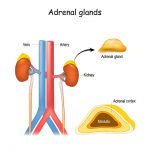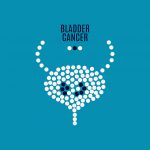Prostate Cancer
Table of Contents:
- Introduction to Prostate Cancer
- Causes and Risk Factors
- Symptoms
- Diagnosis
- Staging and Grading
- Treatment
- Post-Cancer Treatment
Introduction to Prostate Cancer
Prostate cancer is cancer arising from the prostate. The prostate, a walnut-sized gland, is an important part of the male reproductive system. It is located in the pelvic cavity just below the bladder and in front of the rectum. The urethra, a common outlet for urine and semen, traverses the prostate gland. During the passage of semen through the prostatic urethra (part of the urethra that lies within the prostate), the prostate gland adds its secretions to it. The secretions of the prostate gland are essential for the nutrition of sperms and their longevity in the female reproductive tract before fertilization occurs. Therefore, because of its anatomic position, prostate cancer interferes with both sexual and urinary functions.
The prostate cancer may be benign, slow-growing, and confined to the prostate (Benign Prostatic Hyperplasia – BPH); or aggressive that enlarges rapidly, tends to spread locally and metastases to distant sites.
Key Statistics Regarding Prostate Cancer:
- Prostate cancer is the second most common cancer in men, globally.
- In 2018, there were an estimated 1,276,106 new cases of prostate cancer of which 358,989 resulted in death. 1,2.
- The incidence and mortality are high in the elderly population (> 65 years of age).
- The social, environmental, and genetic factors play a crucial role in the preponderance of prostate cancer.
- It is seen that the incidence of prostate cancer is higher in African –Americans as compared to white men. The mortality is also approximately twice as much as seen in white men. 2
Causes and Risk Factors
Cancers originate from abnormal and rapidly dividing cells. Cell division is a complex process in which the cell has to duplicate along with its organelles and genetic material (DNA). Genetic mistakes commonly occur during the duplication of DNA. The cell has a special anti-cancer protective system to cope with these. However, some defected cells may escape the checking process, giving rise to cancer. Cancer in the prostate develops through the same mechanism. Thus, all prostatic cancers arise secondary to a genetic mutation in a cell. In some individuals, genetic predisposition may allow an easy cancer origination. This explains the significance of family history as some individual has cancer forming genes running in their family.
Certain other factors that increase the risk of prostate cancer are: 3
- Age: The risk of prostate cancer increases with age.
- Family history: The presence of prostate or breast cancer in your family increases your risk of having prostate cancer. This is because there are mutations of certain genes (BRCA1, BRCA2) running in the family that play an important role in the pathogenesis of both cancer types.
- Obesity: Obesity increases the risk of advanced-stage diseases in already diagnosed prostate cancer patients.
- Smoking: Smoking increases the risk of both prostate cancer and mortality in diagnosed patients.
- Diet: Certain dietary factors also increase the risk of prostate cancer. A diet high in saturated fats, well-done meat and calcium are known to be associated with prostate cancer. 4
Symptoms of Prostate Cancer
The symptomatic presentation of prostate cancer is versatile in different individuals and usually depends on the stage of cancer. You may remain asymptomatic for years and then have suddenly deteriorating health. It is because of the complex interaction of genes and environmental factors that produces variable severity of symptoms in different individuals. Some commonly reported symptoms of prostate cancer are: 5
- Difficulty in voiding
- Frequent desire to void
- Blood in urine
- Weak urine stream
- Discomfort in the pelvic region
- Constant dull pain in the pelvic region
- Painful ejaculation
- Erectile dysfunction
- Blood in semen
When cancer metastasizes, generalized symptoms start to appear. Metastasis is when some cancer cells escape from their site of origin and land into some other distant organ via the bloodstream or lymph vessels. These cells then give rise to metastatic cancer. The generalized symptoms are:
- Loss of weight
- Loss of appetite
- Extreme fatigue
- Bone pain
Diagnosis of Prostate Cancer
The diagnosis of prostatic cancer starts with a detailed history and examination. Of great significance is the digital rectal examination (DRE) that is specifically done to check the abnormalities of the prostate. The DRE is done by inserting a finger in the rectum through the anus. The prostate lies anterior to the rectum so your doctor will press the anterior rectal wall to sense the position and consistency of the prostate gland. The DRE is of great value for diagnosis 6, screening, and follow-up. The laboratory tests that your doctor may advise are: 6
Prostate-Specific Antigen (PSA) Levels:
It is a protein that is normally produced by the prostate but usually is not found in the blood. Its appearance in the blood is an alarming sign. However, it is important to note that the rising level of PSA in the blood is not diagnostic of prostate cancer. It may also rise in some non-cancerous conditions, benign prostatic hyperplasia (BPH), for example.
Imaging:
Your doctor may order an MRI to study the gross anatomical situation of the prostate. Imaging is also necessary to stage cancer. In prostate cancer, MRI is preferred over other imaging methods because it gives a good view of soft tissues and organs.
Biopsy:
This is the gold standard to diagnose cancer. In this test, a small piece of the prostate is incised and then sent to a histopathological laboratory. The doctor there will prepare the slide and view it under a microscope to identify cancer cells.
Grading and Staging of the Cancer
Grading of the Cancer:
Grading specifies the nature of cancer. High-grade cancers are those that have an aggressive nature and tend to spread locally. Low-grade cancers are those which have an indolent course and grow very slowly. The grading of prostate cancer is done by the Gleason Grading System. 7
- Grade 1: Gleason score of 6 or lower. It is considered low-grade cancer.
- Grade 2: Gleason score 3 + 4 = 7. It is medium grade cancer.
- Grade 3: Gleason score 4 + 3 = 7. It is medium-grade cancer.
- Grade 4: Gleason score 8. It is considered high-grade cancer.
- Grade 5: Gleason score 9 to 10. It is also high-grade cancer.
The Gleason scoring is done by biopsy of the prostate gland. The histopathologist will assign the two most common scores to the prostate depending on the cancerous activity within it. These scores are then added to create a grade.
For example, if the cancerous activity in your prostate gland is moderate, the primary and secondary score will be 3 and 3 for this condition. Now adding these creates a sum of 6, which means you have low-grade cancer.
Staging of the Cancer:
Staging is done to see the spread of cancer. The most commonly used system for it is the TNM staging method by the American Joint Committee on Cancer (AJCC). Usually, patients who have Gleason grades of 2 or more are recommended further imaging investigations for the staging of cancer.
- T indicates the size of the primary tumor
- N indicates the involvement of nearby organs and lymph nodes
- M indicates metastasis to distant organ
T, N, and M are further assigned numbers, and a combination of these tells the actual size and location of cancer and the involvement of adjacent tissue and metastasis to distant organs.
The TNM classification of prostate cancer is: 8
T- Primary Cancer
- TX: Tumor cannot be evaluated because of lack of evidence
- T0: No evidence of primary tumor
- T1: Tumor not detected on DRE and imaging but discovered incidentally
- T2: Tumor confined to prostate only and palpable on DRE
- T3 Tumor extends beyond the prostate
- T4: Tumor extends in the pelvic cavity
N- Nearby Lymph Node Involvement
- NX – Nearby lymph nodes not evaluated
- N0 – No cancer cells are found in nearby lymph nodes
- N1 – Cancer cells are found in nearby lymph nodes
M- Distant metastasis
- M1 – No metastasis
- M2 – Cancer has spread beyond the prostate
Treatment of Prostate Cancer
The treatment plan for prostate growth is decided according to its nature (aggressive or benign). Your doctor will discuss all the treatment options, their risks, their success rates, and the recurrence rates after them. Your opinion may greatly influence the plan regarding treatment strategy. Before making a final decision, your doctor will also consider your age, your current, and previous health status and the stage and grade of your cancer. The treatment plan may include one of the following: 9
- Surveillance
- Surgery
- Radiation therapy
- Cryotherapy
- Focal therapy
- Hormonal therapy
- Chemotherapy
- Immunotherapy
Surveillance:
This is a wait and watch strategy. In surveillance, your doctor closely follows the course of your disease. This approach is preferred when the disease is not aggressive. It allows the preservation of the remaining healthy function of sexual, urinary, and bowel systems. It is also the treatment of choice if your medical history does not allow other forms of therapy. The doctor regularly calls you for different tests such as PSA, DRE, and biopsies to observe the progress of the disease.
Surgery:
Surgery is done when the cancer is high-grade and spreading fast locally. It is done to remove cancer and preserve the remaining healthy surrounding organs and tissues. It is also done when patients on surveillance suddenly show abnormal growth of a static cancerous mass. The surgery to remove the prostate from the body is called a prostatectomy. There are several types of prostatectomy: 10
- Perineal prostatectomy: In this surgery, your surgeon enters the pelvic cavity through the perineum. The perineum is the area between the scrotum and anus.
- Retropubic prostatectomy: In this surgery, the pelvic cavity is approached by making an incision in the lower abdomen. Your surgeon will then remove the prostate from the pelvic cavity through this opening.
- Laparoscopic prostatectomy: In this surgery, the surgical instruments along with a camera are placed in the abdominal cavity through minor surgical cuts. The surgeon views the inside of the abdomen on the screen and performs surgery manually.
- Robot-assisted prostatectomy: it is a very advanced and specialized surgical technique in which the surgeon controls the surgical instrument with a computer-like machine. The instruments and camera are placed similarly in the body as in laparoscopic surgery. The inside of the abdomen appears on the screen helping the surgeon to view and perform the procedure delicately with minimal errors.
Complications of prostate cancer surgery:
The complication of prostatic surgery could be:
- Urinary incontinence
- Erectile dysfunction
Radiation therapy:
In this therapy, high energy radiations are used to target cancer cells, which either kill them or decrease their uncontrollable growth. Your doctor may recommend this as a primary treatment or after surgery if cancer is not completely removed.
Cryotherapy:
It is a specialized treatment in which cancer cells within the prostate are frozen so that they cannot grow further. Your doctor may advise you this treatment if your health condition does not allow the surgery or radiotherapy. In this procedure, under anesthesia, a needle-like probe is administered in the body. This needle will then freeze the target cells under the guidance of ultrasound, subsequently causing their destruction.
Focal therapy:
In this treatment, your doctor uses different methods that target only the cancer cells in the prostate while sparing healthy tissue. Therefore, it is recommended when the cancer is focal, small and does not involve the whole gland. The different forms of focal therapy are:
- High-intensity focal ultrasound: High-intensity sound waves are used in this procedure that kill the cancer cells.
- Irreversible electroporation: A special instrument called “Nanoknife” is used to deliver the electric current to cancer cells, destroying them.
- Focal cryoablation: This technique involves the usage of a needle-like probe that circles the cancerous mass and produces a freezing condition, ultimately damaging it.
Hormone therapy:
The prostate cells depend on the presence of testosterone (male sex hormone) for their growth. This therapy deprives the cancerous prostate cells of the testosterone so that they cannot grow further. Hence, it is also called androgen deprivation therapy. is suggested if there is local recurrence following aggressive therapy. Your doctor will either removes the testes that produce testosterone or give exogenous chemicals that suppress testosterone production.
Chemotherapy:
In this treatment, cytotoxic drugs are given. These drugs recognize rapidly growing cells in the body and kill them. In this way, cancer cells are destroyed but it may also harm other rapidly growing normal cells in the body. Therefore, your doctor will adjust the dose very cautiously to minimize the side effects.
Immunotherapy:
In this therapy, certain drugs are given that enhance the functioning of your body’s normal cells. The idea is to utilize the body’s natural defense system to combat cancer.
Clinical trials:
Your doctor may offer you to enter a clinical trial. These are researches done to find new methods of treatment, the body’s response to treatment and variable results in different individuals.
Post-Cancer Treatment
After successful treatment and eradication of cancer, your doctor advises follow-up care. The guidelines for the follow-up of cancer survivors were provided by the American Cancer Society in 2014 and were later approved by the American Society of Clinical Oncology. The recommendation according to this guideline is:
- Follow-up should include general measures regarding the overall health of the patient.
- Watch for long-term side effects.
- Watch for the recurrence of prostate cancer. Regular visits to the doctor with screening tests should be scheduled.
- Any complications, probability of cancer recurrence, and suitable follow-up care plan should be discussed between the doctor and the patient.
General health care measures
- Maintain a healthy diet. Eat more fruits, vegetables, and whole grain. Reduce high-calorie food intake.
- Limit alcohol consumption and other beverages.
- Limit the calcium intake to 1200 mg per day. It is also good to have at least 600 IU of vitamin D.
- Quit smoking.
- Exercise a lot and stay active.
Screening recommendations
The tests recommended for the screening of recurrence are:
- Prostate-Specific Antigen (PSA) Test – Recommended every 6 to 12 months after treatment, for the first five years.
- Digital Rectal Exam (DRE) – Your doctor discusses with you how often you need to have a DRE done.
Management of complications:
Prostate cancer survivors may face many lifelong complications. Some common ones and their management are discussed.
- As a result of hormonal therapy: Testosterone is an important hormone in males, playing a role in many physiologic and sexual activities of the body. Its deficiency leads to some serious long-term side effects such as:
- Anemia
- Hot flushes
- Deteriorating bone health
- Decreased sexual drive
If you are experiencing any of these conditions, discuss with your doctor so that they can provide a solution in order to alleviate the symptoms.
- Anxiety and depression: Cancer patients have the greatest stress during treatment and after treatment, manifesting as anxiety and depression. It is important to discuss your emotional ill-being with your doctor so they can provide more holistic treatment options.
- Urinary incontinence: It is one of the major complications of prostate cancer surgery experienced by many men. It is important to manage because of its direct impact on the physical and emotional recovery. It may last for 6 to 12 months or longer. However, in most of the men, the urinary symptoms are controlled in a shorter period.
You may experience any of the following types of urinary incontinence following prostate cancer surgery:
- Stress incontinence: You may have a sudden urine leakage while coughing, laughing, sneezing, or exercising. All these activities strain the pelvic floor muscles causing urine to leak out. It is the most common type of urinary incontinence.
- Urge incontinence: You may have a sudden desire to void but before you are able to reach the toilet, leakage may occur.
- Mixed incontinence: You may have bowel incontinence and urinary incontinence occurring simultaneously. Bowel incontinence is a sudden leakage of stools.
Your doctor may suggest some treatment options to manage urinary incontinence. These include:
- Physical therapy: Your doctor may suggest some exercises to strengthen the pelvic floor muscles.
- Routine voiding: In this method, your doctor asks you to urinate timely, for instance, urinate every hour then gradually increase the period until control is achieved.
- Avoid bladder irritants: Certain food such as caffeine, acidic drinks, alcohol, artificial sweeteners, and spicy foods irritate the bladder mucosa and interfere with the healing process.
- Medicine: Your doctor may advice certain medicine if the above-mentioned measures failed to control your symptoms.
- Surgery: If healing does not occur and symptoms last even after a year, then your doctor may recommend surgery, to treat this condition.
- Erectile dysfunction: It is another major complication of prostate cancer surgery. Usually, during sexual arousal, nerves near the prostate send some signals that cause blood vessels in the penis to dilate, allowing maximum blood flow. After surgery, these nerves may suffer damage resulting in erectile dysfunction.
It may take 24 months or more before full erection can be achieved. However, some improvement can be seen within four months of surgery.
If you are facing this problem, then discuss it with your doctor. Your doctor may recommend one or more of the following treatment options, after discussing all the pros and cons.
- Pills
- Urethral suppositories
- Vacuum pumps
- Penile injections
- Penile implants
References:
- Bray, F., Ferlay, J., Soerjomataram, I., Siegel, R. L., Torre, L. A., & Jemal, A. (2018). Global cancer statistics 2018: GLOBOCAN estimates of incidence and mortality worldwide for 36 cancers in 185 countries. CA: a cancer journal for clinicians, 68(6), 394–424.
- Rawla P. (2019). Epidemiology of Prostate Cancer. World journal of oncology, 10(2), 63–89.
- Leitzmann, M. F., & Rohrmann, S. (2012). Risk factors for the onset of prostatic cancer: age, location, and behavioral correlates. Clinical epidemiology, 4, 1–11.
- Gathirua-Mwangi, W. G., & Zhang, J. (2014). Dietary factors and risk for advanced prostate cancer. European journal of cancer prevention : the official journal of the European Cancer Prevention Organisation (ECP), 23(2), 96–109
- Merriel, S., Funston, G., & Hamilton, W. (2018). Prostate Cancer in Primary Care. Advances in therapy, 35(9), 1285–1294.
- Descotes J. L. (2019). Diagnosis of prostate cancer. Asian journal of urology, 6(2), 129–136.
- Chen, N., & Zhou, Q. (2016). The evolving Gleason grading system. Chinese journal of cancer research = Chung-kuo yen cheng yen chiu, 28(1), 58–64.
- Borley, N., & Feneley, M. R. (2009). Prostate cancer: diagnosis and staging. Asian journal of andrology, 11(1), 74–80.
- Chen, F. Z., & Zhao, X. K. (2013). Prostate cancer: current treatment and prevention strategies. Iranian Red Crescent medical journal, 15(4), 279–284.
- Wroński S. (2012). Radical perineal prostatectomy – the contemporary resurgence of a genuinely minimally invasive procedure: Procedure outline. Comparison of the advantages, disadvantages, and outcomes of different surgical techniques of treating organ-confined prostate cancer (PCa). A literature review with special focus on perineal prostatectomy. Central European journal of urology, 65(4), 188–194.








